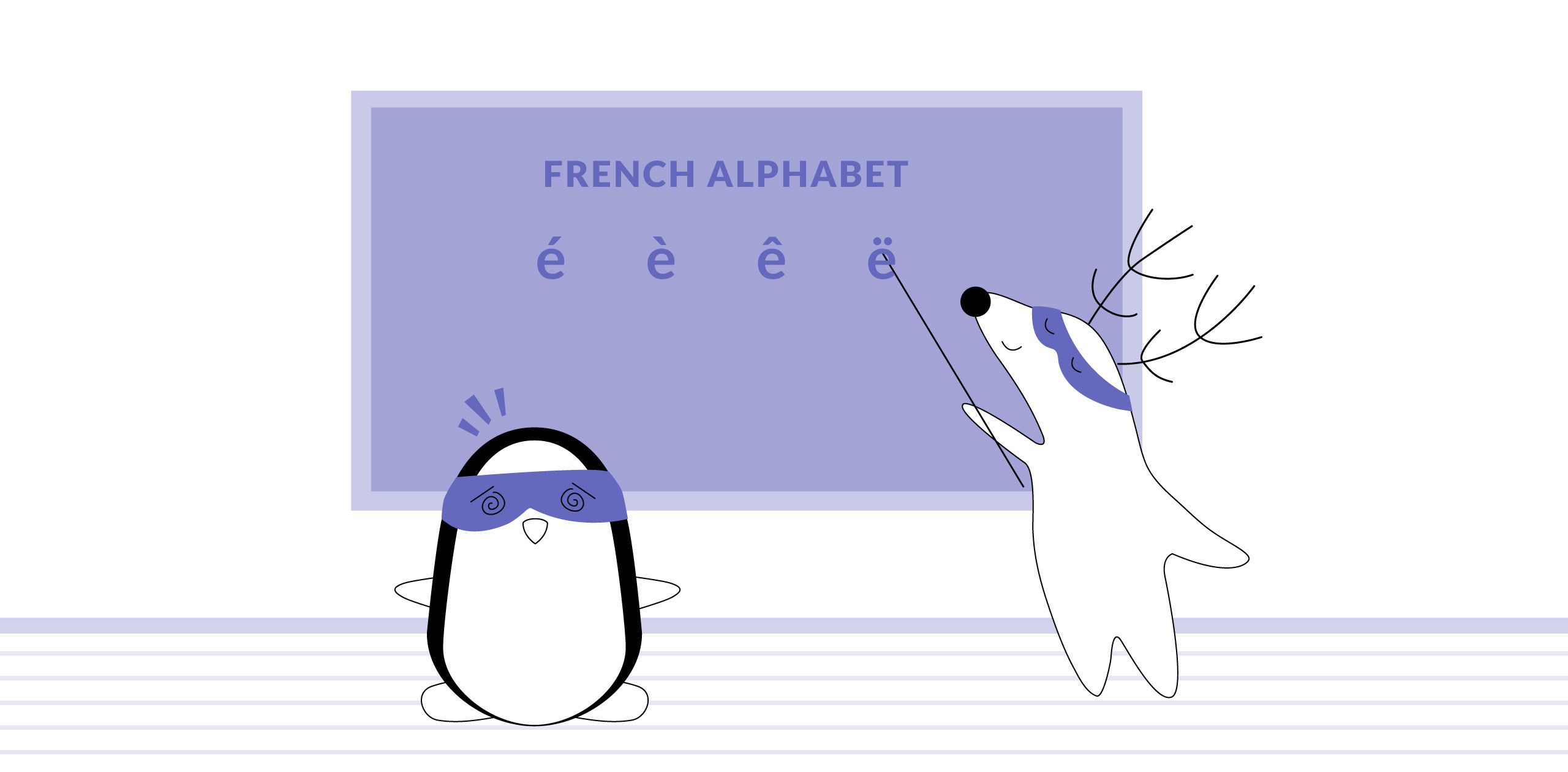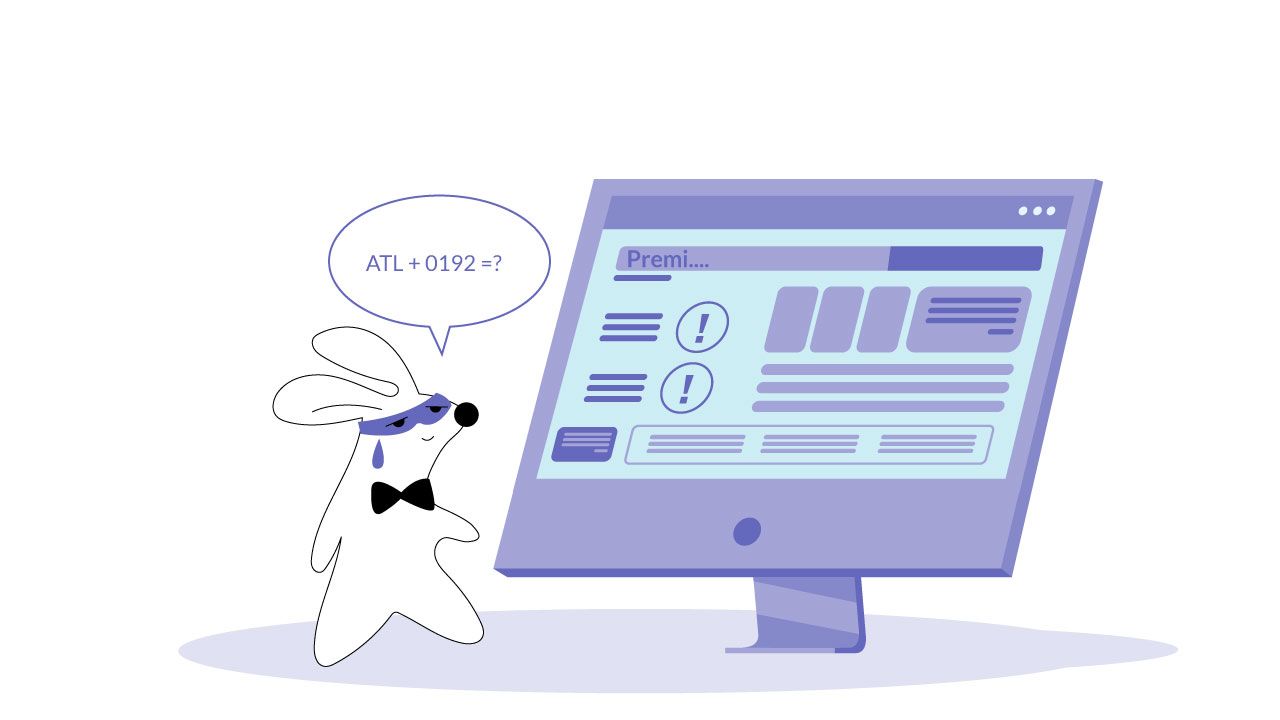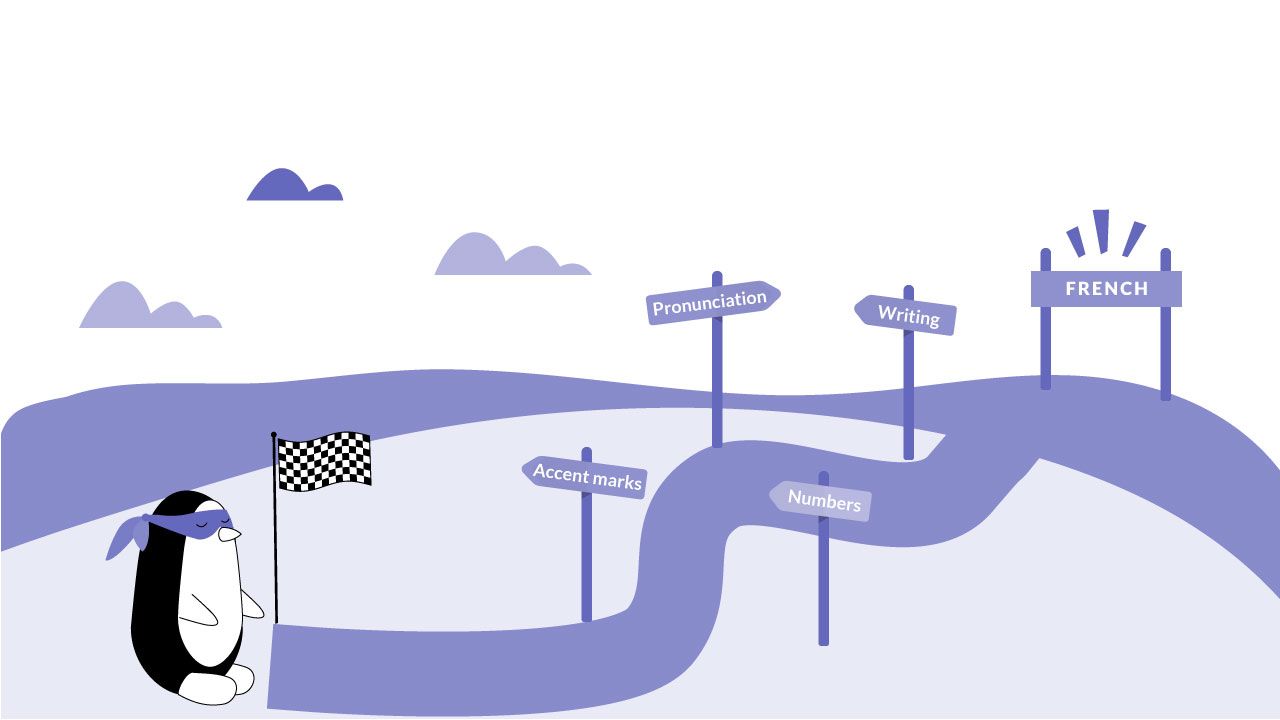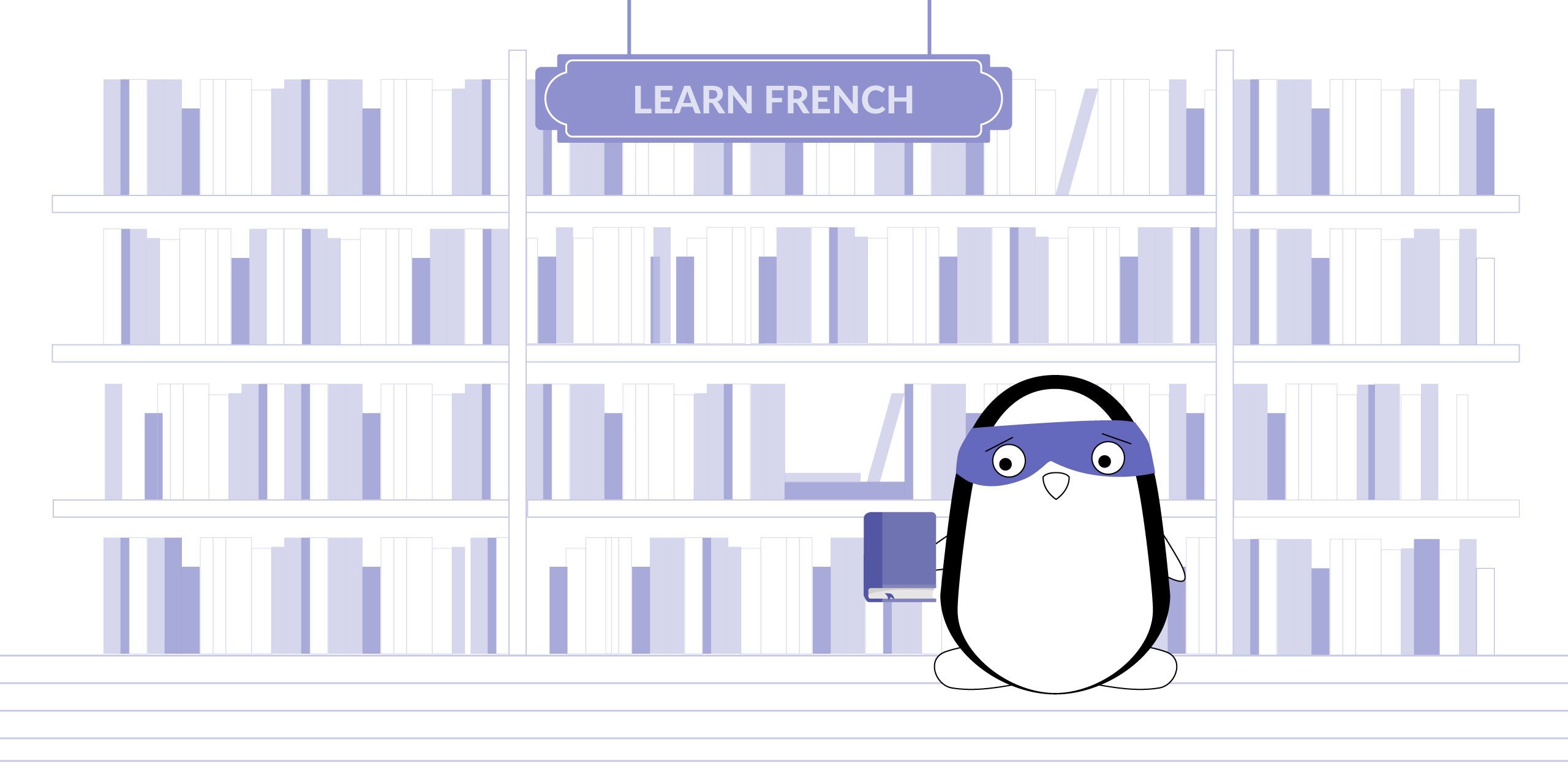
The French alphabet may look similar to the English one, but that doesn’t mean all the letters are pronounced the same. There are many factors that impact the way a certain letter sounds - including its position in the word, history of this word, and of course, various accent marks.
The latter point is often one of the most challenging for beginning French learners who try to master French pronunciation. It’s not enough that different letters can sound the same in different words; but those little diacritical marks placed above them can change everything.
However, there’s not too much to worry about. Yes, there are no accent marks in the English alphabet; but there are only five of them in French - and if you master the little system behind them, you won’t have any problems using them.
Learn French with Langster
Today, we’ll help you with that. In the article below, you’ll find a short yet comprehensive guide on using French accent marks. Read on - and never make the mistake of using accent grave instead of accent aigu again.
Accents in French: the Basics
Accent marks are often used in languages such as French, Spanish, and Italian to denote a pronunciation difference.
In French, there are five of them:
- é – the acute accent (l'accent aigu)
- à/è/ì/ò/ù – the grave accent (l'accent grave)
- â/ê/î/ô/û – the circumflex (l'accent circonflexe)
- ç – the cedilla (la cédille)
- ë/ï/ü – the trema (l'accent tréma)
As you can see, with the exception of cedilla, they are used only with vowels (except for cedilla) - so you can’t put them on any letter you want. However, don’t worry - French accent marks are not as complicated as they might seem.
Let’s take a look at what each accent mark does and how the vowel it’s used with is pronounced.
Accent Aigu
Acute accent - l'accent aigu - is used only with letter e, and, like other accents marks, it changes the way this sound is pronounced.
While e on its own can sound different depending on its position in the word, e accent aigu will always sound the same regardless of where it’s placed.
The French é is pronounced more or less like "ay" as in “say” or “way” - or /e/ if you're familiar with the International Phonetic Alphabet.
However, if you say it exactly like “ay,” this might sound like an English word. To pronounce it like a native French speaker, place your tongue the way you’d do for saying “ay”, but once you start making the sound, don’t move your lips or tongue and stick to that /e/.
Where Is E Accent Aigu Used?
First of all, in regular French words.
At the beginning of the word, the letter é serves as an indicator of the Old French or Latin word that started with es or s. Like été (summer), which was originally spelled esté.

In Grammar
French e accent aigu is often used to distinguish the /e/ sound in regular words - for example,
French
English
un défi
challenge
However, it’s also important for grammar constructions. First, the past participle of all -er verbs ends in é:
French
English
manger - j’ai mangé
to eat - I ate
And second, é appears in many stem-changing verbs and changes to è (e accent grave) in certain conjugations:
French
English
répéter - je répète
to repeat - I repeated
Accent Grave
Unlike accent aigu which only shows up above e, accent grave is used above three vowels: “a,” “e,”, and “u” (à/è/ù). Its function differs depending on the situation.
For example, when used with e, the grave accent indicates that the pronunciation is /ɛ/ - for example,
French
English
une lèvre
a lip
On the other hand, when used with a or u, this accent mark is not used for pronunciation purposes; it serves to distinguish between two words that are otherwise spelled identically such as ou (or) and où (where).
In Grammar
E accent grave also appears in stem-changing verbs, and then either é or regular e changes to it. For example,
French
English
acheter - j’achète
to buy - I bought
È is also the first letter of the 3rd person plural passé simple ending of all -er verbs:
French
English
aller - ils allèrent
to go - they went
Accent Circumflex
Accent circumflex (or circonflexe) is the only one of the French accents that appears above all the vowels: â, ê, î, ô, û. Depending on the sound it’s used with, it can serve different purposes.
- It can indicate a spelling change from Latin, where the same vowel was followed by one or more now-unused letters, often s or a doubled letter. For example, une forêt - lat. forestis (forest).
- It can change the pronunciation of the vowels a, e, and o. In that case, â is pronounced roughly like an English “ah” as in British “bath” (/ɑ/); ê is pronounced like an English “eh” as in “get” (/ɛ/); and ô is pronounced roughly like an English “oh” as in “boat” (/o/).
- This accent also helps distinguish between two words that otherwise would be spelled identically - for example, du (some) and dû (past participle of devoir).
In Grammar
Accent circumflex is also used in several grammatical situations. For example, it is found in the 1st and 2nd person passé simple conjugations of all verbs:
French
English
nous donnâmes
we give
vous donnâtes
you give
Also, in verbs such as connaître (to know,) the circumflex disappears in all conjugations where i is not followed by t: il connaît but je connais.
Accent Tréma

Accent tréma, or the dieresis looks like two little dots above the letter and is used with e, i, and u (ë/ï/ü). And its only function is to indicate that the letter in the French word should be pronounced distinctly from the vowel that precedes it - for example, Noël (Christmas).
French
English
Noël
Christmas
Le tréma is often used in situations where a diphthong can occur - for example, the word Noël without this accent would sound like /nɔl/.
La Cédille
This is the only French accent mark that is used with a consonant - letter c. It looks like a little hook, and the final letter is called c cédille. And it has only one function.
Une cédille is used to change a hard c, pronounced /k/, to a soft c, pronounced /s/ - for example, in
French
English
garçon
boy
It appears, for example, when c is followed by a hard vowel but needs a soft pronunciation.
Please note: c is already soft in front of e, i, and y - so you can’t put a cédille there.
How to Type French Accents
Mastering how to pronounce French sounds with accents is one thing; typing French accent marks is the other one. After all, you don’t have a key on your keyboard with c cédille (ç) or e accent aigu (é) - so what can you do?
Don’t worry - there are many ways to type French accents based on your computer and current keyboard:
French Keyboard
The first and probably simplest tip is to install a French keyboard. There you can type the grave and acute accents with a single key meant for special characters. To type anything with a circumflex, you will simply type ^ before the vowel, and for a tréma, type ¨ and the vowel. That’s it!
...or not? The only issue with this method is you will have to adjust to a slightly different keyboard. The French keyboard layout is different from the one you’re using - instead of QWERTY, it has AZERTY.
If you’re used to typing with the traditional layout, it might be challenging for you to discover that A and Q have switched places, W and Z did the same, and M is now where the semi-colon used to be. Moreover, numbers on the French keyboard require the shift key.
However, if you want to give it a try - good luck. Simply install the French keyboard in your computer’s settings and start typing.
International Keyboard
If you want to type French accents but are not willing to give up your traditional keyboard - no problem. In that case, you can install an international keyboard and then use very simple keyboard shortcuts. Here they are:
- Accent grave → type ` (to the left of 1), then the vowel.
- Accent aigu → type ' (single quote), then e.
- Cédille → type ', then c.
- Circonflexe → type ^ (shift + 6), then the vowel.
- Tréma → type " (shift + '), then the vowel.
Regular Keyboard

If you don’t want to install anything - no problem. There are many ALT codes that you can use on windows with your regular keyboard.
| Accent mark | ALT code |
|---|---|
| à | ALT + 133 |
| À | ATL + 0192 |
| á | ALT + 160 |
| Á | ALT + 0193 |
| â | ALT + 131 |
| Â | ALT + 0194 |
| ä | ALT + 132 |
| Ä | ALT + 142 |
| ç | ALT + 135 |
| Ç | ALT + 128 |
| é | ALT + 130 |
| É | ALT + 144 |
| è | ALT + 138 |
| È | ALT + 0200 |
| ê | ALT + 136 |
| Ê | ALT + 0202 |
| ë | ALT + 137 |
| Ë | ALT + 0203 |
| î | ALT + 140 |
| Î | ALT + 0206 |
| ï | ALT + 139 |
| Ï | ALT + 0207 |
| ô | ALT + 147 |
| Ô | ALT + 0212 |
| ù | ALT + 151 |
| Ù | ALT + 0217 |
| û | ALT + 150 |
| Û | ALT + 0219 |
| ü | ALT + 129 |
| Ü | ALT + 154 |
| Accent mark | ALT code |
|---|---|
| à | ALT + 133 |
| À | ATL + 0192 |
| á | ALT + 160 |
| Á | ALT + 0193 |
| â | ALT + 131 |
| Â | ALT + 0194 |
| ä | ALT + 132 |
| Ä | ALT + 142 |
| ç | ALT + 135 |
| Ç | ALT + 128 |
| é | ALT + 130 |
| É | ALT + 144 |
| è | ALT + 138 |
| È | ALT + 0200 |
| ê | ALT + 136 |
| Ê | ALT + 0202 |
| ë | ALT + 137 |
| Ë | ALT + 0203 |
| î | ALT + 140 |
| Î | ALT + 0206 |
| ï | ALT + 139 |
| Ï | ALT + 0207 |
| ô | ALT + 147 |
| Ô | ALT + 0212 |
| ù | ALT + 151 |
| Ù | ALT + 0217 |
| û | ALT + 150 |
| Û | ALT + 0219 |
| ü | ALT + 129 |
| Ü | ALT + 154 |
MAC
If you have MAC, it’s even easier to type French accent marks.
Press and hold a key on the keyboard — for example, a — to display the accent menu. Then choose the letter you need from the menu or press the number key shown for the character.
Phone
On the phone, typing French accents is also pretty simple. On an iPhone or iPad, press and hold the button for the unaccented letter for a moment and then choose the right letter from the menu. This method also works on Android.
Final Thoughts

When learning the French language, you can come across many challenges: conjugations, pronunciation, numbers… However, accent marks should not be among them.
Yes, there are a few accent marks in French, and they can change the pronunciation of the word significantly. But if you are familiar with the simple, structured rules that we have covered above, you shouldn’t experience any issues.
The key here, just like with any other part of learning French, is to practice. For example, download the Langster app, read the stories, get familiar with the examples of accent usage, maybe even consider writing some of them down - and success is inevitable.
We wish you luck on your language learning journey - and hope that neither accents nor any other parts of French grammar will become a challenging issue for you.









